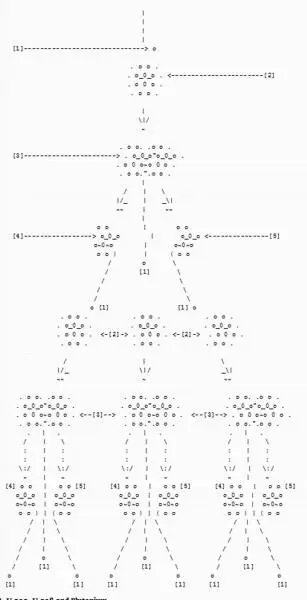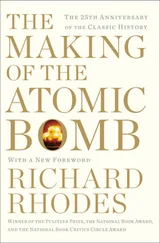J. Dyson - Documentation and Diagrams of the Atomic Bomb
Здесь есть возможность читать онлайн «J. Dyson - Documentation and Diagrams of the Atomic Bomb» весь текст электронной книги совершенно бесплатно (целиком полную версию без сокращений). В некоторых случаях можно слушать аудио, скачать через торрент в формате fb2 и присутствует краткое содержание. Жанр: Сделай сам, на английском языке. Описание произведения, (предисловие) а так же отзывы посетителей доступны на портале библиотеки ЛибКат.
- Название:Documentation and Diagrams of the Atomic Bomb
- Автор:
- Жанр:
- Год:неизвестен
- ISBN:нет данных
- Рейтинг книги:3 / 5. Голосов: 1
-
Избранное:Добавить в избранное
- Отзывы:
-
Ваша оценка:
- 60
- 1
- 2
- 3
- 4
- 5
Documentation and Diagrams of the Atomic Bomb: краткое содержание, описание и аннотация
Предлагаем к чтению аннотацию, описание, краткое содержание или предисловие (зависит от того, что написал сам автор книги «Documentation and Diagrams of the Atomic Bomb»). Если вы не нашли необходимую информацию о книге — напишите в комментариях, мы постараемся отыскать её.
Documentation and Diagrams of the Atomic Bomb — читать онлайн бесплатно полную книгу (весь текст) целиком
Ниже представлен текст книги, разбитый по страницам. Система сохранения места последней прочитанной страницы, позволяет с удобством читать онлайн бесплатно книгу «Documentation and Diagrams of the Atomic Bomb», без необходимости каждый раз заново искать на чём Вы остановились. Поставьте закладку, и сможете в любой момент перейти на страницу, на которой закончили чтение.
Интервал:
Закладка:
When a U-235 atom splits, it gives off energy in the form of heat and Gamma radiation, which is the most powerful form of radioactivity and the most lethal. [See comment.] When this reaction occurs, the split atom will also give off two or three of its 'spare' neutrons, which are not needed to make either Barium or Krypton. These spare neutrons fly out with sufficient force to split other atoms they come in contact with. [See chart below.] In theory, it is necessary to split only one U-235 atom, and the neutrons from this will split other atoms, which will split mor ... so on and so forth. This progression does not take place arithmetically, but geometrically. All of this will happen within a millionth of a second.
The minimum amount to start a chain reaction as described above is known as SuperCritical Mass. The actual mass needed to facilitate this chain reaction depends upon the purity of the material, but for pure U-235, it is 110 pounds (50 kilograms), but no Uranium is ever quite pure, so in reality more will be needed. [See comment.]
Diagram of a Chain Reaction

Diagram Outline
[1] - Incoming Neutron
[2] - Uranium-235
[3] - Uranium-236
[4] - Barium Atom
[5] - Krypton Atom
Uranium is not the only material used for making atomic bombs. Another material is the element Plutonium, in its isotope Pu-239. Plutonium is not found naturally (except in minute traces) and is always made from Uranium. The only way to produce Plutonium from Uranium is to process U-238 through a nuclear reactor. After a period of time, the intense radioactivity causes the metal to pick up extra particles, so that more and more of its atoms turn into Plutonium.
Plutonium will not start a fast chain reaction by itself, but this difficulty is overcome by having a neutron source, a highly radioactive material that gives off neutrons faster than the Plutonium itself. In certain types of bombs, a mixture of the elements Beryllium and Polonium is used to bring about this reaction. Only a small piece is needed. The material is not fissionable in and of itself, but merely acts as a catalyst to the greater reaction.
III. The Mechanism of The Bomb
An ordinary aircraft altimeter uses a type of Aneroid Barometer which measures the changes in air pressure at different heights. However, changes in air pressure due to the weather can adversely affect the altimeter's readings. It is far more favorable to use a radar (or radio) altimeter for enhanced accuracy when the bomb reaches Ground Zero.
While Frequency Modulated-Continuous Wave (FM CW) is more complicated, the accuracy of it far surpasses any other type of altimeter. Like simple pulse systems, signals are emitted from a radar aerial (the bomb), bounced off the ground and received back at the bomb's altimeter. This pulse system applies to the more advanced altimeter system, only the signal is continuous and centered around a high frequency such as 4200 MHz. This signal is arranged to steadily increase at 200 MHz per interval before dropping back to its original frequency.
As the descent of the bomb begins, the altimeter transmitter will send out a pulse starting at 4200 MHz. By the time that pulse has returned, the altimeter transmitter will be emitting a higher frequency. The difference depends on how long the pulse has taken to do the return journey. When these two frequencies are mixed electronically, a new frequency (the difference between the two) emerges. The value of this new frequency is measured by the built-in microchips. This value is directly proportional to the distance travelled by the original pulse, so it can be used to give the actual height.
In practice, a typical FM CW radar today would sweep 120 times per second. Its range would be up to 10,000 feet (3000 m) over land and 20,000 feet (6000 m) over sea, since sound reflections from water surfaces are clearer.
The accuracy of these altimeters is within 5 feet (1.5 m) for the higher ranges. Being that the ideal airburst for the atomic bomb is usually set for 1,980 feet, this error factor is not of enormous concern.
The high cost of these radar-type altimeters has prevented their use in commercial applications, but the decreasing cost of electronic components should make them competitive with barometric types before too long.
The air pressure detonator can be a very complex mechanism, but for all practical purposes, a simpler model can be used. At high altitudes, the air is of lesser pressure. As the altitude drops, the air pressure increases. A simple piece of very thin magnetized metal can be used as an air pressure detonator. All that is needed is for the strip of metal to have a bubble of extremely thin metal forged in the center and have it placed directly underneath the electrical contact which will trigger the conventional explosive detonation. Before the strip is set in place, the bubble is pushed in so that it will be inverted.
Once the air pressure has achieved the desired level, the magnetic bubble will snap back into its original position and strike the contact, thus completing the circuit and setting off the explosive(s).
The detonating head (or heads, depending on whether a Uranium or Plutonium bomb is being used as a model) that is seated in the conventional explosive charge(s) is similar to the standard-issue blasting cap. It merely serves as a catalyst to bring about a greater explosion. Calibration of this device is essential. Too small of a detonating head will only cause a colossal dud that will be doubly dangerous since someone's got to disarm and re-fit the bomb with another detonating head. (An added measure of discomfort comes from the knowledge that the conventional explosive may have detonated with insufficient force to weld the radioactive metals. This will cause a supercritical mass that could go off at any time.) The detonating head will receive an electric charge from either the air pressure detonator or the radar altimeter's coordinating detonator, depending on what type of system is used. The Du Pont company makes rather excellent blasting caps that can be easily modified to suit the required specifications.
This explosive is used to introduce (and weld) the lesser amount of Uranium to the greater amount within the bomb's housing. [The amount of pressure needed to bring this about is unknown and possibly classified by the United States Government for reasons of National Security.]
Plastic explosives work best in this situation since they can be manipulated to enable both a Uranium bomb and a Plutonium bomb to detonate. One very good explosive is Urea Nitrate. The directions on how to make Urea Nitrate are as follows:
Ingredients
[1] 1 cup concentrated solution of uric acid (C5 H4 N4 O3)
[2] 1/3 cup of nitric acid
[3] 4 heat-resistant glass containers
[4] 4 filters (such as coffee filters)
Filter the concentrated solution of uric acid through a filter to remove impurities. Slowly add 1/3 cup of nitric acid to the solution and let the mixture stand for one hour. Filter again as before. This time the Urea Nitrate crystals will collect on the filter. Wash the crystals by pouring water over them while they are in the filter. Remove the crystals from the filter and allow 16 hours for them to dry. This explosive needs a blasting cap to detonate.
It may be necessary to make a quantity larger than the aforementioned list calls for to bring about an explosion great enough to cause the Uranium (or Plutonium) sections to weld together on impact.
Читать дальшеИнтервал:
Закладка:
Похожие книги на «Documentation and Diagrams of the Atomic Bomb»
Представляем Вашему вниманию похожие книги на «Documentation and Diagrams of the Atomic Bomb» списком для выбора. Мы отобрали схожую по названию и смыслу литературу в надежде предоставить читателям больше вариантов отыскать новые, интересные, ещё непрочитанные произведения.
Обсуждение, отзывы о книге «Documentation and Diagrams of the Atomic Bomb» и просто собственные мнения читателей. Оставьте ваши комментарии, напишите, что Вы думаете о произведении, его смысле или главных героях. Укажите что конкретно понравилось, а что нет, и почему Вы так считаете.











